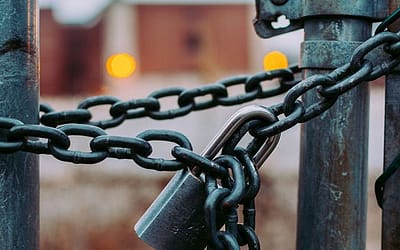 Getting a first class website developed can be an expensive business so you need to make sure that the site is as effective as possible. Below is a list of 10 things that could ruin the effectiveness of your website and turn it into a colossal waste of money.
Getting a first class website developed can be an expensive business so you need to make sure that the site is as effective as possible. Below is a list of 10 things that could ruin the effectiveness of your website and turn it into a colossal waste of money.
1. Music
Don’t include music on the site unless it’s a site for a musician or a band. Even then give the website reader the option to start the music. Do not, under any circumstances start music playing automatically when someone arrives on the site. There is nothing more embarrassing and annoying than sitting in the middle of a room or office with other people present and having music suddenly blare out from the computer.
If you think that your site needs background music then think again. It’s tacky and will make your business look tacky.
2. Pop-Ups
I’m talking here of those pop-ups that appear either when you enter a site or leave it. They seem to be predominant on sites from people trying to sell their internet marketing expertise. Typically they ask you to sign up for a newsletter or free download. Don’t fall into the trap of using them on your site no matter what the internet marking “experts” tell you. They’re a waste of time for two reasons. Firstly many browsers these days ship with pop-up blockers so a proportion of visitors to the site will never see them . Secondly, they are intrusive and will turn many people off. They do me.
One form of pop-up that I find especially annoying is the one that comes up when you close the site, or click away from it, asking if you really want to leave the site. It’s like leaving a shop and having an assistant run after you asking if you really meant to leave! What do these people think I am? An idiot!
3. Images
Don’t include tacky images, out-of-focus images or badly proportioned images – ever! Even the smallest image, if poor, will ruin your entire site. If you’re including examples of your work and you’re not confident you can take high quality images yourself, hire a professional. The difference it will make to your site, and your profits, will more than compensate for the cost. That brings me on to my next point…
4. Don’t Under-spend
If you get a site developed on the cheap you’ll be wasting your money. Decide on the absolute maximum you can afford. Set that as your budget. Get some quotes from different developers for that budget and choose the one that will produce the best site for that amount. Don’t, like many people, get a number of quotes and choose the cheapest. You’ll invariably be wasting your money.
Actually the word under-spend is wrong. It should be under-invest because a website is an investment not a cost. Invest wisely and it will pay off many times over.
5. Don’t leave your site for long periods without updating it
Your website is your shop window. You wouldn’t leave the same display in a shop window for months or years. But many people leave their websites and never change them from one year to the next. A website needs constant updating to make it look fresh and to reflect changes to your business.
6. Don’t start your homepage with a potted history of your company
When someone arrives on your site they want to know what you do, what type of customers do you target your products or services at, the area you operate in and they want some kind of proof that you can deliver. Knowing that your company was started in 1845 by your great-great-grandfather is irrelevant.
You have about 5 seconds to convey those messages and capture your visitor’s attention. This is not easy and requires a skilled layout using images, headlines, strap-lines and links to various parts within the site. This is where cost comes into it. Invariably, cheap site will skimp on the home page design.
Think of your home page like the front cover of a magazine. The magazine has to sit on a shelf amongst other magazines and attract attention such that people will take it off the shelf look more closely and then buy it. It’s the same with your website.
7. Don’t turn finding your telephone number or contact details into treasure hunt.
The whole point of a website is to attract customers to your business. If it’s not easy to find your contact details how do you expect people to get in touch? Put your phone number and address in a prominent position, especially your phone number. ideally on every page.
Don’t leave your address off the site. Some people, particularly those trading from a home address, will do this. Well, I’m sorry, but I don’t buy this line of thought. If you’re in business I want to know your address otherwise, to me, you’re not a legitimate business.
8. Don’t make navigation a game of pot luck
As with your telephone number, navigating your site should be a “no brainer” for your website visitor. Clearly marked links set out in a logical structure. If the visitor has to search to find the navigation buttons he’ll soon get fed up and leave.
The convention is that navigation menus should be placed either vertically on the left hand side of the page or across the top. Sometimes down the right hand site. This is where people expect to find them. Some web designers think its stylish to deviate from this. Do that at your peril.
9. Don’t try and sell or promote things that are not part of your business.
We’ve all seen it. You come across an immaculate looking website for, say a beautician, and tacked on the end is a page advertising the owner’s villa for rent in Spain. I’ve even seen this on a site for a large firm of solicitors.
It’s the quickest way to turn a website that’s the equivalent of a Bond Street shop into a back street pound shop. It screams “cheapskate”.
10. Don’t think your website is finished. It needs constant updating
When your new website finally goes live don’t think “that’s it”. It’s just the start. Update, update and update….ongoing. A website that’s not updated periodically is like a shop window display that’s never changed. It will start looking more and more tired over time and who would want to visit a shop where the display id faded and has cobweb’s across it?






0 Comments